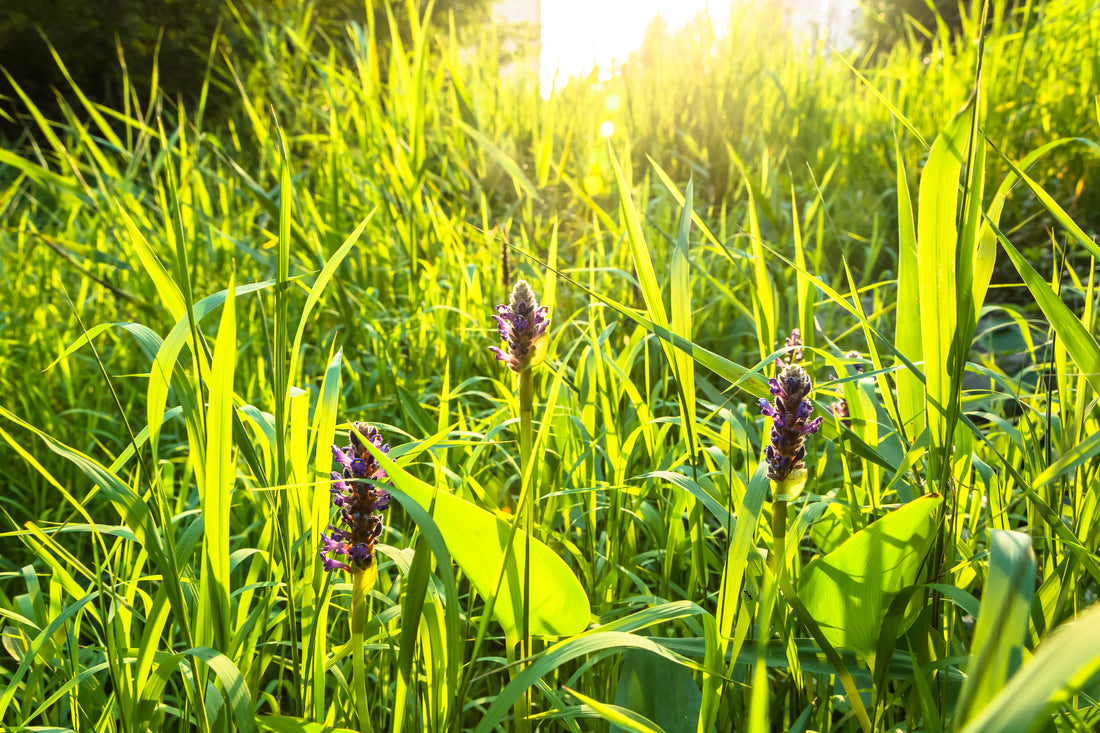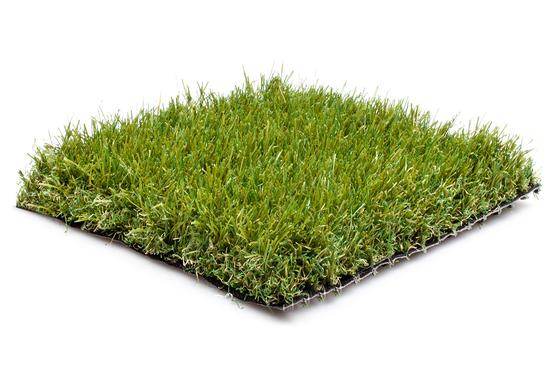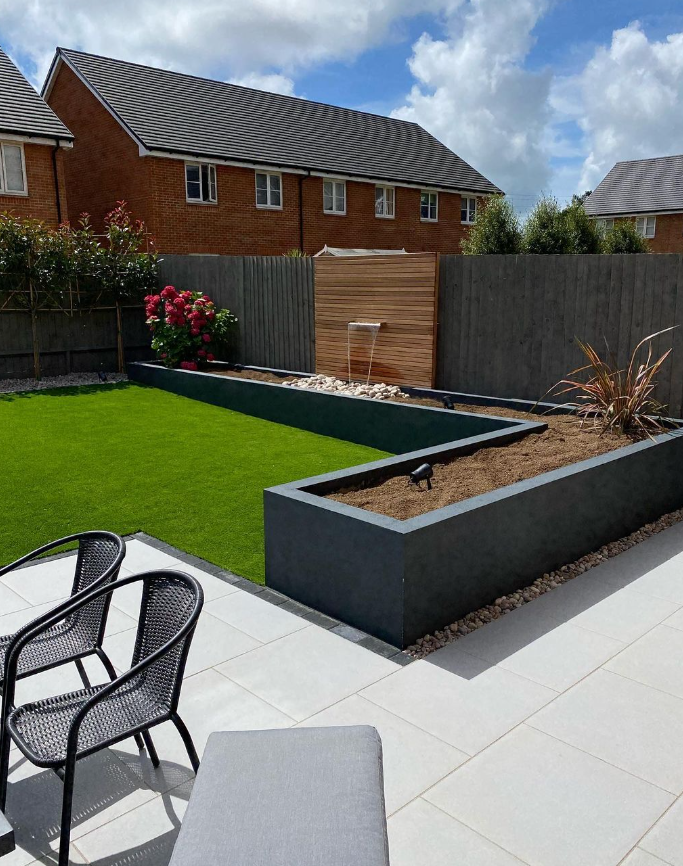
How to Stop Weeds Growing Through Artificial Grass
Weeds growing through artificial grass can feel frustrating, especially when you’ve chosen it for an easier life. The truth is, most problems start before the grass is even laid.
With the right preparation and a few smart choices, artificial lawn weed prevention is simple.
By clearing the ground, using a strong weed membrane for artificial grass, and installing artificial grass properly, you can avoid weeds becoming a nuisance. Add in light upkeep and quick action on the odd sprout, and your lawn will stay neat.
Let’s look even further into what more you can do to help stop weeds growing through your artificial grass.
Remove Existing Weeds Before Installation

The first step in artificial lawn weed prevention is making sure the ground is totally free from existing growth.
If weeds and roots are left behind, they’ll almost always find a way back, even under a new surface. You can pull them up manually, but it’s usually better to combine this with a strong weed killer for longer-lasting results.
Some homeowners go a step further by solarising the area, covering the ground with clear plastic so the heat from the sun kills off stubborn roots.
Whichever method you choose, clear everything right down to the soil. Preparing the area properly before installing artificial grass ensures you don’t have to battle weeds growing through artificial grass later.
Use a High Quality Weed Barrier Membrane
One of the simplest yet most effective ways to prevent weeds in artificial lawn projects is by laying a weed membrane for artificial grass.
This barrier sits beneath the sub-base layer and works by blocking light, which seeds need to grow. Without sunlight, weeds simply can’t thrive. It’s worth investing in a durable, non-biodegradable fabric, as cheaper options can break down over time, leaving gaps for growth. The membrane should cover the whole area, with edges overlapped so nothing can sneak through.
By combining this with compacted base layers, you reduce the chance of weeds growing through artificial grass and create a solid foundation for a long-lasting, tidy lawn.
Install Proper Base Layers for Stability
Another key step in installing artificial grass properly is creating a solid, stable base. A strong foundation doesn’t just support the surface; it also makes it harder for weeds to push through.
Most installers use MOT type 1 or crushed granite because both materials compact well, leaving very few gaps where seeds could settle. Each layer should be added gradually and compacted down until the surface is firm and level. If this stage is rushed, spaces in the base can allow weeds growing through artificial grass to become a problem later.
Taking the time to prepare stable layers ensures your lawn not only looks smooth and natural but also resists unwanted growth for years to come.
Ensure Correct Drainage to Prevent Weed Growth

Poor drainage often leads to damp conditions that weeds love, so good water flow is an important part of artificial lawn weed prevention.
A well-prepared base with a graded slope allows rain to run off instead of pooling beneath the surface. Pair this with a permeable weed membrane for artificial grass, and water can escape while still blocking light to stop seeds from taking hold. Without proper drainage, trapped moisture creates an ideal environment for moss and unwanted growth.
By planning this step during installation, you’ll avoid many common issues and keep your lawn looking tidy with far less artificial grass maintenance.
Seal Edges and Joins Properly
Weeds don’t always break through from underneath, they can sneak in from the sides if edges aren’t sealed. That’s why finishing touches matter just as much as the main layers.
Using edging strips, timber, or steel borders creates a firm boundary that blocks soil and seeds from creeping in. For joins within the lawn, strong adhesive tape helps close gaps where growth might appear. It’s a simple step, yet one that makes a big difference in preventing weeds growing through artificial grass over time.
Done correctly, sealing edges keeps the surface neat and secure, supporting the overall success of installing artificial grass properly.
Consider Using Weed Suppressant Sand
For an extra layer of protection, many people add kiln-dried sand after laying their artificial grass.
This works as a kind of weed suppressant sand, filling the spaces between fibres and limiting how much light reaches any seeds that might land on the surface. The sand is brushed into the pile so it sits evenly, giving the grass a neat, upright look at the same time. It’s not a replacement for good groundwork or a weed membrane for artificial grass, but it does add an extra safeguard.
Used alongside proper installation, it helps reduce the chance of weeds growing through artificial grass while keeping the lawn looking fresh.
Regularly Inspect and Maintain Your Grass
Even with the best preparation, artificial grass still benefits from a bit of routine care.
Regular checks mean you can spot small problems before they turn into big ones. Focus on the edges, as this is often where weeds try to creep in, and clear away any leaves or debris that might carry seeds. Seasonal inspections are usually enough, and they only take a few minutes. A quick brush now and then also helps keep the fibres upright and the surface tidy.
With these simple artificial grass maintenance tips, you’ll reduce the chance of weeds growing through artificial grass and keep your lawn looking great with very little effort.
Spot Treat Any Emerging Weeds Immediately
Even with strong prevention measures, the odd weed might still appear now and again. The key is to act quickly. If you see growth, pull it up by hand before the roots spread, or use a pet-safe weed killer for a simple fix.
Treating weeds early makes it far easier to control them, and you won’t risk them spreading across the surface. This step is more about maintenance than repair; it’s a quick way to protect the effort you’ve already put into installing artificial grass properly. With a little attention, you’ll stop weeds growing through artificial grass, becoming a recurring problem and keep your lawn looking neat all year round.
Weeds growing through artificial grass don’t need to be a constant battle. Most issues can be avoided with the right preparation, from clearing the ground and using a weed membrane for artificial grass to sealing edges and brushing in weed suppressant sand.
Once installed correctly, only light upkeep is needed to keep your lawn looking fresh. If you’d like any more advice on installing artificial grass properly or want expert help with your next project, contact us today at Tuda Grass, we’ll be more than happy to help.


